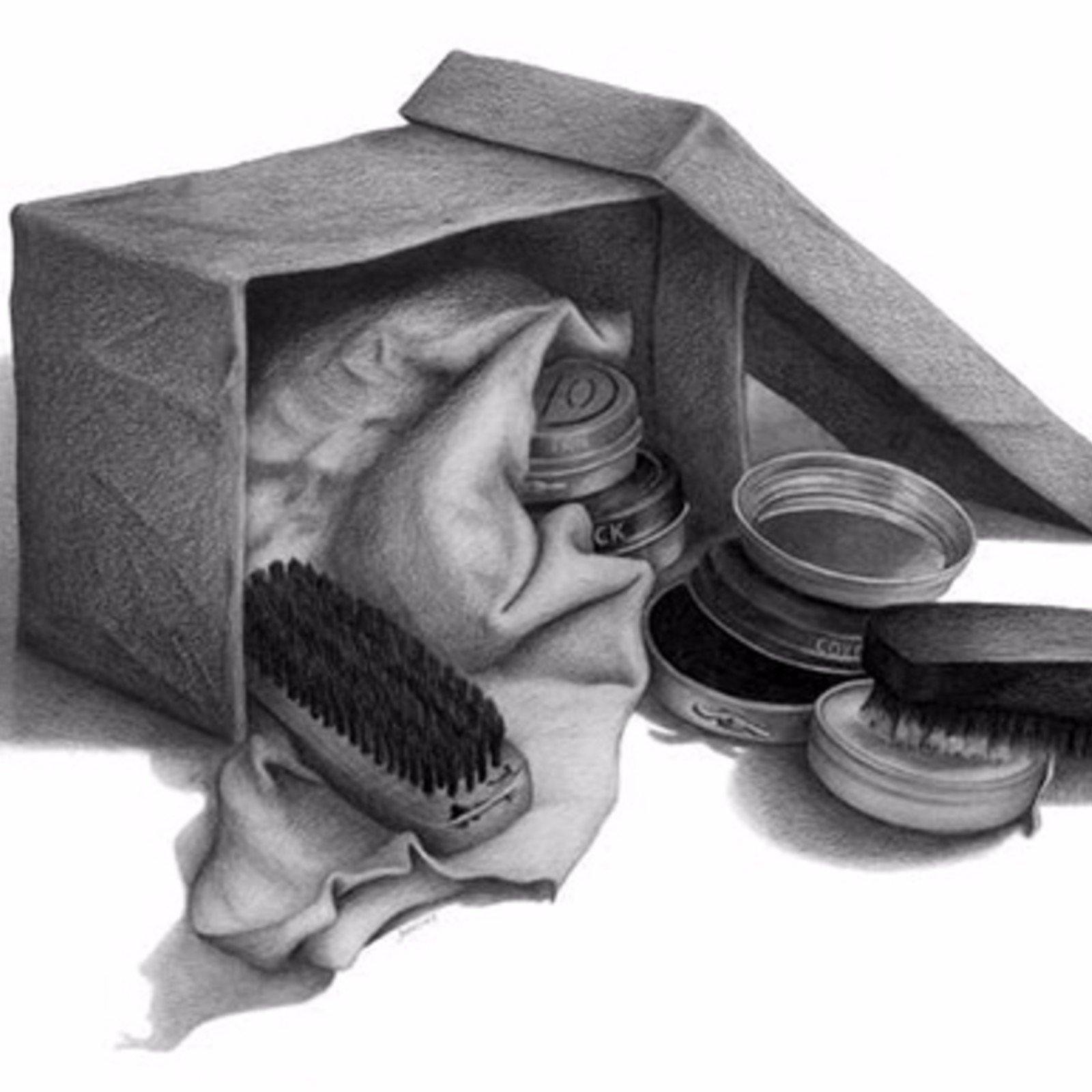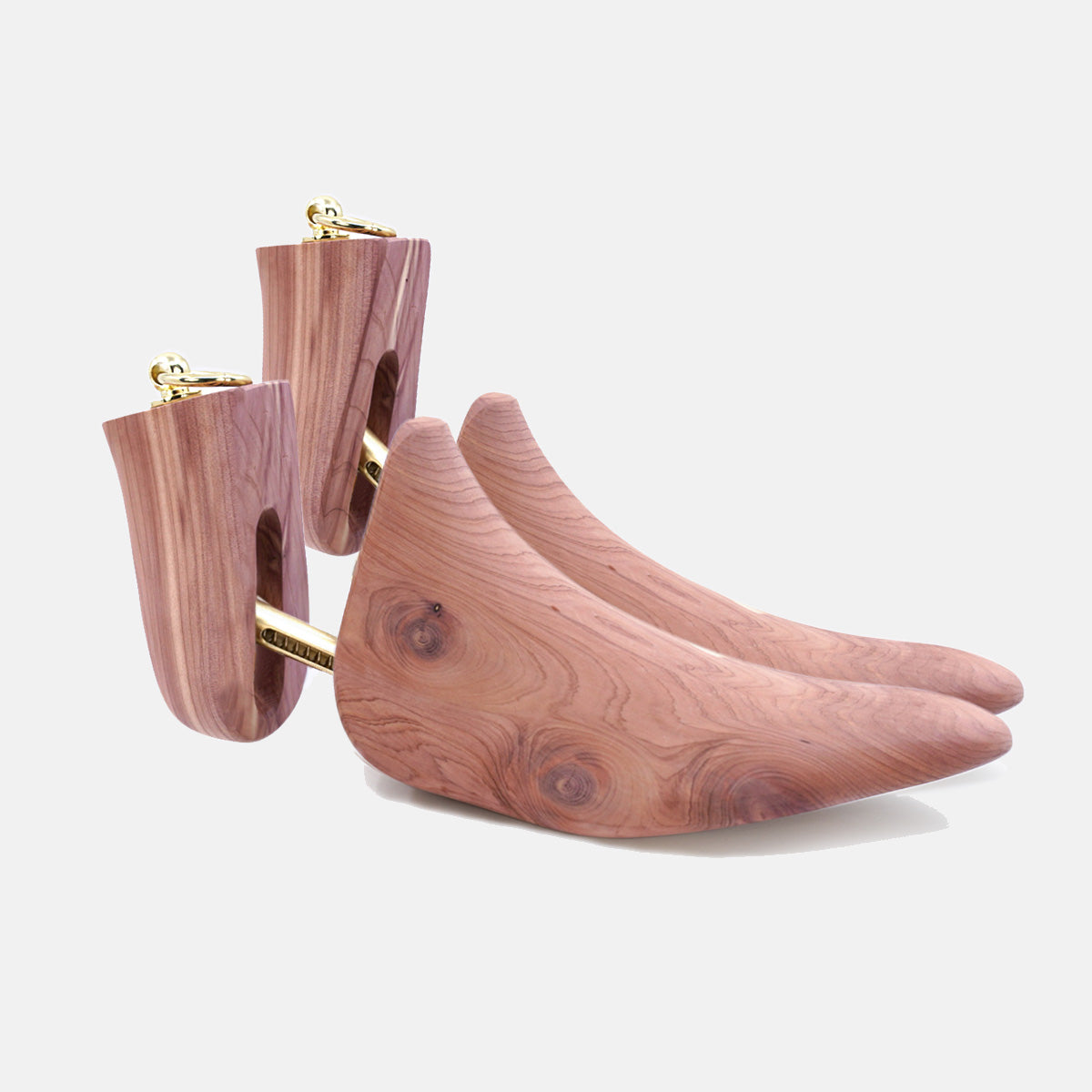Get 10% Off - Auto Applied At Checkout
Get 10% Off - Auto Applied At Checkout
Shoe Trees
shoe stretchers
Sets

A Butler's Guide to Leather Shoe Care
March 01, 2017 5 min read
"If your shoes are not clean, you will not look well dressed no matter how smart your clothes are," declared Stanley Ager - pre-eminent Butler of the 20th century.
His shoes were never scuffed. Never dull. He loved polishing shoes, and did they shine. His shoes glowed. They could speak, the mirror glaze, the deep finish. Learnt over a lifetime. Passed down from valet to hallboy. Shoe care was an integral skill, and every Butler knew it, because the first thing he'd be judge on was the state of his master's shoes, a standard that Stanley Ager took pains to learn, to exceed, to perfect.
Through Stanley Ager's elegant book, 'A Butler's Guide to Running a Home and Other Graces', his 53 years of experience 'is served', to anyone interested in leather shoe care. The highest standard shoe care.
Shoehorns
"I always have a shoehorn...I never put a shoe on without one. There is no other way to avoid pressing down the back of the shoe." - Stanley Ager.
Every morning Ager would place the Second Lord of Levan's shoes next to his dressing table chair with the shoe horn on top. The Second Lord used the horn to slide his feet into his fitted leather shoes. Importantly for Ager, the horn would protect the stiff leather (that forms the heel) from being crushed. If damaged, the shoe would need to be replaced - an unnecessary expense to Ager.
It was a matter of routine. Ager recounts a 'Jeeves and Wooster' moment one particular morning. The shoehorn was not placed at its usual spot. As quick as a whistle the buzzer rang. The Second Lord couldn't find the horn, anywhere. Ager calmly asked his worried master if the shoe horn was in fact on the dressing table, next to the buzzer, which he had just pressed? So it was.
Lesson #1: A shoe horn is designed to help your feet slide effortlessly into your quality leather shoes. Importantly, it will protect the heal from damage. Creating a routine will ensure you use a shoehorn consistently. Remember, 'out of sight, out of mind'.
Ager Hack: If you don't own a shoehorn, use an old metal spoon. Always undo the laces prior to removing the shoe. This will also prevent the heel from thinning.
Shoe Trees
"Always put shoe trees into your shoes as soon as you take your shoes off. This is essential." - Stanley Ager
A shoe tree is to the valet as a hammer is to the blacksmith. Without it, the valet cannot carry out his duty. As a footman, Ager was taught that a leather shoe will stretch after a day of wear. That feat sweat and moisture damages the leather shoes. But by using shoe trees, the shape of the shoe would return, and the moisture within the shoe would be wicked away. Early on, Ager was gifted a pair of 100-year-old shoe trees, owned by valets past. He used them whenever his master removed his shoes. It was Ager's first task when his master returned home.
Lesson #2 Insert shoe trees into your leather shoes whenever you take them off. They will dispel moisture and bring the leather back into shape.
Ager Hack: If you don't own a pair of shoe trees, stuff a pair of rolled up socks into the front of the shoe -the toe part - as this area needs more support than the heel.
Washing Shoes
"I wash my shoes once a month to rid them of stale perspiration and to remove the dust caught in the seams, which on sewn shoes will cut the stitches." - Stanley Ager.
Do you know our feet sweat up to half a pint of moisture a day? That's a lot of stale perspiration. 'Washing' one's leather shoes isn't so common today. At least not in the traditional sense. Ager would wash fine leather shoes with kid gloves. Fine leather can wrinkle if saturated with water. Ager was primarily concerned with removing grit from between the sole and the shoe's upper and cleaning the inside of the shoe. To remove dirt and grit he would pass the instep under cold running water. He would then wipe the inside of the shoe by using a sponge dipped in warm water with a drop of ammonia.
The drying process was necessary. Critical in fact. He would place the shoes somewhere warm, and let them dry for 24 hours. For the first 12 hours he stuffed them with newspaper. He would then insert wooden shoe trees. As a final task, he would apply moisturiser, which prevented the leather from drying too much.
Lesson #3: The utmost of care is required when 'washing' your fine leather shoes. Never submerge them or saturate them completely. The drying process is very important.
Tip: If water scares you, as it does me, try to brush your shoes after each wear (to remove dirt and dust) and use a good cleaner/conditioner at least once a month. Never dry your shoes directly near a heat source. This will dry out the leather's natural moisture and may crack the leather.
Polishing Shoes
"It takes under four minutes to polish a pair of shoes - one minute to put on the polish, one minute to work it in, one minute to polish and half a minute or so to rub with a chamois." - Stanley Ager
Ager always polished his shoes on a table with laces removed. A pair of shoe trees would remain in them while he held a shoe steady with his left hand. He would polish his shoes in three straight-forward steps. [We recommend the Boot Black Silver Line range for the excellent nourishment and shine it will provide for your quality shoes].
Step 1: Remove dirt/dust
Ager would brush the shoes with a soft horse haired brush (or use a slightly damp cloth) prior to polishing.
Step 2: Apply polish
Ager would use shoe cream and polish in concert with one another. As Ager explains, '[s]hoe cream preserves leather and keeps it supple, and wax polish creates a protective film and is water-resistant.'
Ager applied the shoe cream with a soft polishing cloth. A smear at a time. He reasoned that more could be applied if required. But too much would mark the shoes and stick to the seams.
Ager applied the shoe polish with a hard bristle brush. A gentle scrape from the edge of the polish tin was all he needed. The trick was to avoid lumps. He brushed around and covered the shoe. Ager would let the polish sit on one shoe while he worked the polish into the second.
Step 3: Brush and buff the shoes
Ager used the soft haired brush to brush around the shoe - including the instep - with light strokes. The first brushing was designed to disperse the polish evenly rather than bring out a shine. To bring about a heightened shine, Ager used a soft leather chamois, rather than the soft haired brush - but either will give the desired effect.
Lesson #4: Polishing one's shoes does not take long and can be done to a high standard if polished with the right method. It should be noted that there are many methods to polish one's shoes and bring about a shine.
Ager Hack: Remove the laces before you begin to prevent polish from smearing them. Don't forget to polish the tongue for a proper finish.
Subscribe
Sign up to get the latest on sales, new releases and more …











